Search Results
Fine Jewelry University Articles matching: “Crystal opal”
Showing only FJU Article results. Click here to show all results.
Fine Jewelry University (Show All FJU Articles)
-

How Are Lab Grown Diamonds Made?
… with some reported successes, but none could ever be scientifically verified. The quest continued. Diamonds are a crystalline form of carbon, and so making artificial carbon crystal was the problem of lab grown diamonds. For decades, … diamonds in the lab like they grew in nature. High Pressure High Temperature Diamonds How does nature form diamond crystals? Nature does it very deep underground. Diamond growing naturally takes place about 100 miles below the earth’s …
-

Jewelry Repair FAQ
…a gemstone fell out; who wouldn’t? That’s why we have literally 100s of carats of loose diamonds, sapphires, rubies, opals, pearls, and more in all shapes and sizes to choose from when selecting a replacement stone for repairs. Matching …gemological training, and years of experience. Of course, some gems are more difficult to match than others. Pearls, opals, and other gems with patterns in them (Blood Stone, Pietersite, etc.) are notoriously difficult to match. With …
-
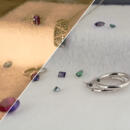
Gem in the Spotlight: Alexandrite
… bluish-green in daylight, fluorescent light, and some LED light. Under incandescent light, candle, and firelight, alexandrite appears purplish-red. This is because of how the trace element chromium interacts with alexandrite’s crystal structure. It absorbs most wavelengths of light very well, only transmitting green and red light. This means that depending on the light source the stone will reflect more of the accent colors of light. Since fluorescent light has a stronger…
-
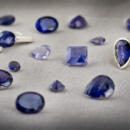
Gem in the Spotlight: Iolite
…, especially with polarized light. Pleochroism is caused by differing absorption of light rays in doubly refractive crystals. Thus, no singly refractive gemstone can exhibit pleochroism. The process works because of the ability of a gem to … scale, iolite is a somewhat soft gem. It is comparable to quartz (Amethyst, Citrine, etc), a little harder than Opal, and softer than Emerald or Topaz. Because of this, some extra care should be taken with your iolite jewelry. Try to …
-
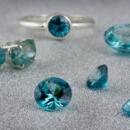
Gem in the Spotlight: Blue Zircon
Zircon may be last in the alphabet of gemstones, but it is first in sparkle. The crystal structure of zircon creates one of the liveliest displays found in any colored gem. In fact, before any of the manmade diamond simulates were made, the colorless version of zircon was used in jewelry to mimic diamond. Why? Natural …
-
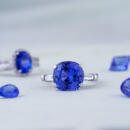
Gem in the Spotlight: Tanzanite
…are the cut and clarity. As with all colored gems, the value of tanzanite comes from its color. Tanzanite has a Moh’s hardness of 6-7, making it about the same hardness as quartz, softer than ruby, sapphire and emerald and hard than opal. Tanzanite has a refractive index of 1.69-1.70. History and Lore of Tanzanite Tanzanite was originally discovered in 1967 in Tanzania, near Mount Kilimanjaro, by a Maasai tribesman named Ali Juuyawatu, although the credit often goes to …
-
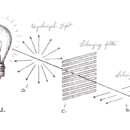
The Magic of Polarized Light
… and blue 3D movies, modern 3D uses two images along with a pair of glasses that have polarizing filters for lenses. This tricks your brain into thinking you are seeing a three-dimensional object using our perception of depth. Liquid crystal displays: Polarizing filters are part of an LCD screen’s core design. Without their ability to align light, LCD screens simply wouldn’t work. Radio/X-ray/Microwave: Radios, X-ray machines, and microwaves all use some form of a …
-
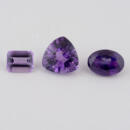
Gem in the Spotlight: Amethyst
… way to pay tribute to the goddess Diana. In order to protect Amethyst, Diana turned her into a statue made of pure, crystalline quartz. Dionysus, upon seeing the stunning statue, wept tears of wine in remorse for his actions. These tears … a deep, rich purple color. Amethyst also naturally occurs as geodes (rock that contains a hollow cavity lined with crystals) and the most famous of these is the largest ever found. This amazing stone named “The Empress of Uruguay” stands 10…
-
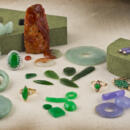
Gem in the Spotlight: Jade
…are silicates which basically just means that they are rocks. These particular rocks are made up of silicon and oxygen as the primary components, but the other elements are what make them special. The arrangement of these atoms in its crystal structure is what gives jade its extraordinary toughness. At this point, it’s important to discuss the technical meaning of “toughness”. Toughness is a material’s resistance to fracturing, whereas hardness is its resistance to …